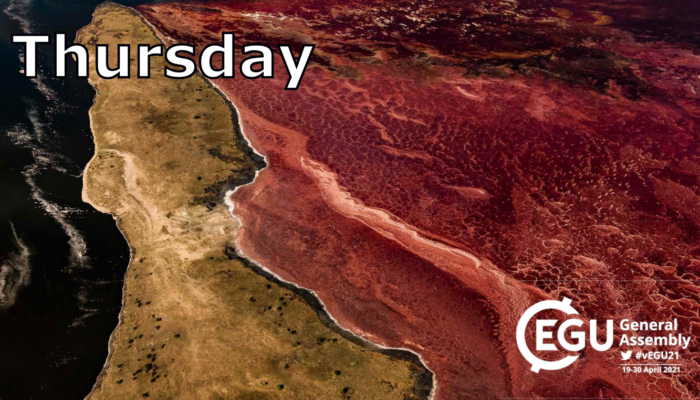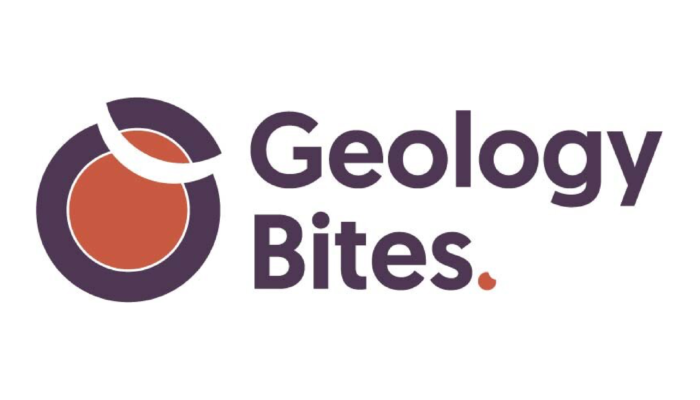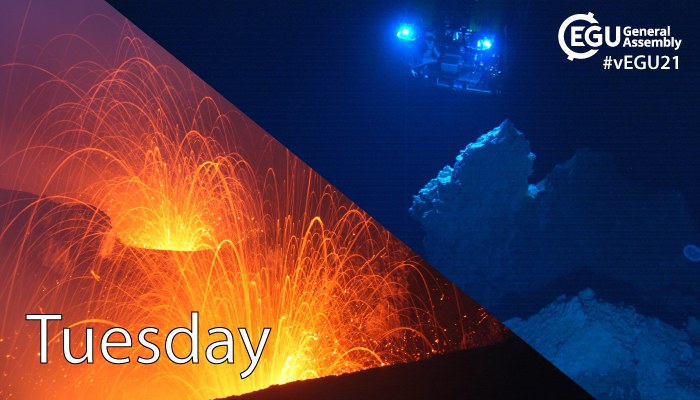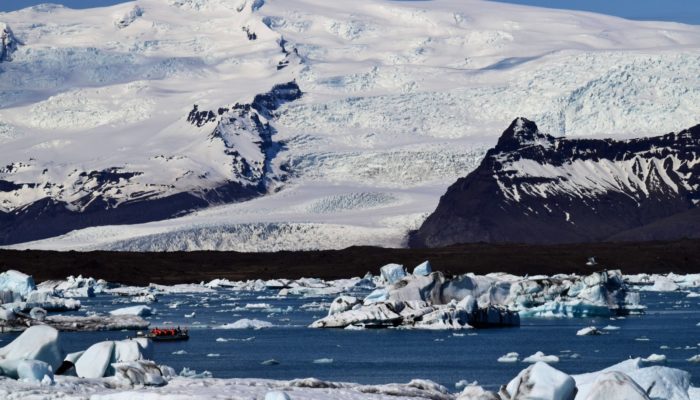It’s Thursday, and vEGU Week 2 is almost gone. But we are here, again, to make things easier for you! So, suggestions for the day: let’s start at 11.45 CEST by knowing more about “Volcano-glacier interactions: Arctic, Antarctic, and globally”, session GMPV9.4 (does Eyjafjallajökull sound familiar?). Here, Lamb et al. will introduce us to icequakes on Chilean volcanoes with the vPICO “Discriminatin ...[Read More]
Geodynamics
Geology bites: In conversation with researchers
We are still in a lockdown and we can still use some entertainment for when we stare at the same four walls for hours on end or go on our daily walk. Fear not, dear reader, I have got just the thing for you in these troubling times: the new podcast Geology Bites hosted by Oliver Strimpel: www.geologybites.com. Don’t fret about the name, there’s plenty of geodynamics content as well. In ...[Read More]
Geochemistry, Mineralogy, Petrology & Volcanology
vEGU21: Wednesday highlights
Ready for another day of science? Make sure you’ve filled up on snacks and sugar, because a new exciting day of volcanoes, geochemistry, petrography, and mineralogy awaits you. Get a full load of energy because the morning starts explosively (09:00-10:30 – CEST) with Magma ascent, degassing and eruptive dynamics, in GMPV9.6. (link) Where you can understand more about eruptive processes walki ...[Read More]
Geochemistry, Mineralogy, Petrology & Volcanology
vEGU21: Tuesday highlights
After some technical teething problems on Monday morning (honestly is it even an online conference without technical difficulities?) we’re extra eager to get stuck into some of the amazing science being presented today. As with all the sessions so far, most of the presenters have uploaded display materials to accompany their presentations which range from posters to full length recorded talks, so ...[Read More]
Seismology
The Seismica Initiative: towards a community-driven, Diamond Open Access journal for seismological research
It all started with a tweet from @NatureNews (the news team of Springer Nature): In general, academics welcome Open Access (OA) initiatives; however, this particular tweet has been met with stiff criticism. Unethical profit-seeking, financial gatekeeping, academic elitism, and straining scientific budgets were commonly raised concerns among the many retweets and replies. Unfortunately, these conce ...[Read More]
Climate: Past, Present & Future
How humans are influencing climate change and its significance in defining a new geological epoch: the Anthropocene
The Anthropocene Working Group (AWG) is the body tasked to propose a formal definition for the Anthropocene as a geological time unit. Join us at the EGU2021 General Assembly on Wednesday 28th April at 14:15-15:00 CEST for a series of presentations on the Anthropocene in session SSP2.6. The Anthropocene concept Geologists cope with the enormity of 4.5 billion years of Earth history by divid ...[Read More]
Geochemistry, Mineralogy, Petrology & Volcanology
vEGU21: Monday GMPV highlights
Welcome to vEGU21 week 2! If you are a GMPVer, this will be a solid and interesting week of presentations. Each presenter will talk for two minutes, then there will be breakout text chats, and simultaneous live video chats. So be ready to be thinking about 7 things at once… No idea where to go or what to do? Try out this itinerary (all times in CEST): After a hearty breakfast of whatever you ...[Read More]
Geodynamics
The Sassy Scientist – Classic Conference
Maddie is in the final stretch of her PhD track. Whilst finalizing the last couple of figures and jotting down the last couple of paragraphs for her thesis, she checks the institutional web pages for job opportunities ferociously. Coming up blank, she mutters: How important is a social network for obtaining a future job in academia? Dear Maddie, It is absolutely paramount. You don’t seriously thin ...[Read More]
Cryospheric Sciences
Introducing TJ Young, our new early-career representative for the cryo-division of the EGU!
Every two years, the Cryospheric Sciences division of the European Geophysical Union (EGU) elects a new representative for its early-career scientists. Starting in April 2021, Tun Jan (TJ) Young will take over the role from Jenny Turton, who is the outgoing representative. TJ shares a bit about himself and how his previous leadership experience aligns with the goals of EGU’s early career scientist ...[Read More]
Geochemistry, Mineralogy, Petrology & Volcanology
Geology Bites. – Podcast conversations about Geology
Podcast conversations about geology with researchers making key contributions to our understanding of the Earth and the Solar System Since you are reading an EGU Blog, you must already know how remarkable the field of geology is. The subject matter stretches the imagination – with its almost cosmological timescales, processes operating on scales from the atomic to the continental, and unima ...[Read More]










